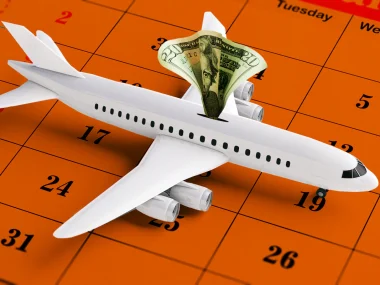If you’re planning a trip to Germany and want to make the most of it, you need more than a quick list of “must-sees.” You want to understand why each place matters, what makes it unique, and what kind of experience you’ll have there.
Germany is not just castles and sausages, it’s a country layered with history, innovation, natural beauty, and personality. Let’s walk through it, one destination at a time, not just where to go, but why.
1. Berlin
Berlin is not a city you “do” in a day or two, it’s a city you feel. It’s been at the center of world history more than once, and every street seems to carry some kind of story.
When you’re in Berlin, you’ll find reminders of the Cold War, the Berlin Wall, Checkpoint Charlie, and remnants of East and West Germany, but you’ll also feel its creative undercurrent. This is a city that thrives on reinvention. Old factories become art spaces, punk rock clubs open next to fine dining restaurants, and you’re just as likely to hear techno echoing through a warehouse as you are to find a poetry slam in a café.
Spend a few hours at the Holocaust Memorial. Walk slowly. Let it speak to you. Then explore the graffiti-covered East Side Gallery, Berlin’s longest stretch of surviving Wall, now turned into open-air protest art. Eat currywurst from a food truck. Wander through Kreuzberg or Neukölln. Berlin isn’t polished, but it’s real, and you’ll leave feeling like you’ve seen something meaningful.
2. Munich
Now, head south to Munich, and prepare for a completely different energy. Munich is cleaner, wealthier, more orderly, and often what people imagine when they think of “Germany.” Lederhosen, beer halls, and massive pretzels? Yep. But it’s more than that.
Munich is the capital of Bavaria, and the Bavarian culture is proudly preserved here, from baroque churches to mountain folklore. Marienplatz, with its towering Neues Rathaus (New Town Hall), is the city’s heartbeat. Catch the Glockenspiel chiming at 11 AM. Then step into the English Garden, one of the largest urban parks in the world, where you might find people sunbathing, paddle boating, or literally surfing in the river.
If you’re a car enthusiast, the BMW Museum is a must. Art lover? Check out the Alte Pinakothek or the contemporary exhibits at Haus der Kunst.
And of course, if you’re here in late September, prepare yourself for Oktoberfest, the world’s largest beer festival. Just don’t call it a costume when locals wear traditional Bavarian clothing — it’s a cultural identity.
3. Heidelberg
Heidelberg doesn’t shout, it whispers. Nestled in a river valley and home to one of Germany’s oldest universities, this small city is the kind of place that feels like a painting.
The main attraction is Heidelberg Castle, a partially ruined Renaissance structure that watches over the town from the hill above. You can walk or take a funicular up, but either way, you’ll be treated to sweeping views of red rooftops, church steeples, and the Neckar River winding through the hills.
Back in town, stroll down the Hauptstrasse (Main Street), lined with cozy cafés, bookshops, and old-world charm. Cross the Old Bridge for sunset. Heidelberg is a place to take your time, perfect for couples, solo travelers, or anyone who just wants to slow down and breathe.
4. Hamburg
If you like cities with grit and edge, Hamburg delivers. This is Germany’s biggest port city, and you feel the water everywhere. The Elbe River, the massive harbor, and countless canals shape the rhythm of the city.
But Hamburg is more than ships and docks. It’s stylish and surprisingly elegant in parts, especially around the Alster Lakes. The Speicherstadt, its red-brick warehouse district, is atmospheric and a UNESCO World Heritage Site. Just next door is the Elbphilharmonie, a futuristic concert hall with some of the best views in the city.
Looking for nightlife? Head to the Reeperbahn in St. Pauli, once known for sailors and red lights, now packed with clubs, bars, and live music. Hamburg has attitude, history, and a kind of rugged charm that grows on you.
5. Cologne
Cologne is warm, welcoming, and laid-back, a city that doesn’t try too hard but still makes you fall in love with it. The skyline is dominated by the stunning Cologne Cathedral, an enormous Gothic structure that took over 600 years to build. Climb the tower if you have the legs for it, the view is your reward.
But Cologne isn’t just about the cathedral. The city has a strong art and design scene (check out the Museum Ludwig for modern art), a thriving LGBTQ+ community, and one of the most fun Carnival seasons in Europe.
It’s a city of beer too, just not the heavy kind. Here they drink Kölsch, a light local beer, served in small glasses and refilled constantly by the server until you say stop. There’s a rhythm to Cologne that’s hard to explain but easy to enjoy.
6. Dresden
Dresden is a city rebuilt, literally. Nearly flattened in WWII, its historic center has been painstakingly restored, and the result is breathtaking. Walking through the Altstadt feels like stepping back into a golden age of European art and architecture.
The Zwinger Palace, Semper Opera House, and Frauenkirche are not just buildings, they’re symbols of resilience and cultural pride. You can see the original blackened stones mixed with new ones, a visual reminder of what the city has survived.
But don’t miss Neustadt, across the river. It’s funky, artsy, and full of independent shops and bars. Dresden has two sides, one elegant, one experimental, and they balance each other perfectly.
7. Leipzig
Leipzig is often called “the new Berlin,” but honestly, it’s doing its own thing, and doing it well. It’s a city of artists, students, and thinkers, with a vibe that’s more grassroots than glossy.
The former cotton mill complex known as the Spinnerei has been turned into a maze of art galleries and studios. Music lovers will appreciate that Bach lived and worked here. And history buffs should know this city played a key role in the peaceful protests that led to the fall of the Berlin Wall.
But what really makes Leipzig special is how it feels. Affordable, full of energy, and still off the radar for most tourists, it’s the kind of place that makes you want to stay longer than you planned.
8. Rothenburg ob der Tauber
Let’s get something out of the way: yes, Rothenburg is touristy. But it’s also jaw-droppingly beautiful, and no list of German destinations is complete without it.
This perfectly preserved medieval town in Bavaria looks like it hasn’t changed in 500 years. It’s all timber-framed houses, winding lanes, towers, and flower boxes. You can walk the old city walls, visit the quirky Medieval Crime Museum, and shop for Christmas decorations year-round.
The best experience? Stay overnight. When the tour buses leave and the streets quiet down, the town reveals its softer, magical side.
9. The Black Forest
Germany’s Black Forest (Schwarzwald) is the stuff of legends, literally. It inspired the Brothers Grimm and countless fairy tales. But beyond the folklore, this region offers deep, peaceful nature and charming villages.
Hike through pine-covered hills, chase waterfalls in Triberg, or soak in thermal baths in Baden-Baden. Try a slice of Black Forest cake (made with real cherry schnapps) from a local bakery. This is where Germany slows down, and where travelers reconnect with nature and themselves.
10. Neuschwanstein Castle
Even if you’ve never been to Germany, chances are you’ve seen this castle on a puzzle, a postcard, or in a Disney movie. Neuschwanstein Castle is one of the most photographed places in Europe, and it’s easy to see why.
Perched on a hill in the Bavarian Alps, it was built by King Ludwig II as a tribute to art, music, and imagination. The interiors are ornate, the views are stunning, and the entire setting feels like a dream.
Go early to avoid the crowds, and don’t skip the walk to Marienbrücke, the bridge with the most iconic view. Yes, it’s popular. But yes, it’s 100% worth it.
Conclusion
Germany isn’t just one thing, it’s many different cultures, landscapes, and personalities rolled into one country. Whether you’re into modern cities or medieval towns, mountains or museums, beer halls or opera houses, you’ll find something that speaks to you.
And the best part? It’s incredibly well connected by train, safe for solo travelers, and more affordable than many of its Western European neighbors.





